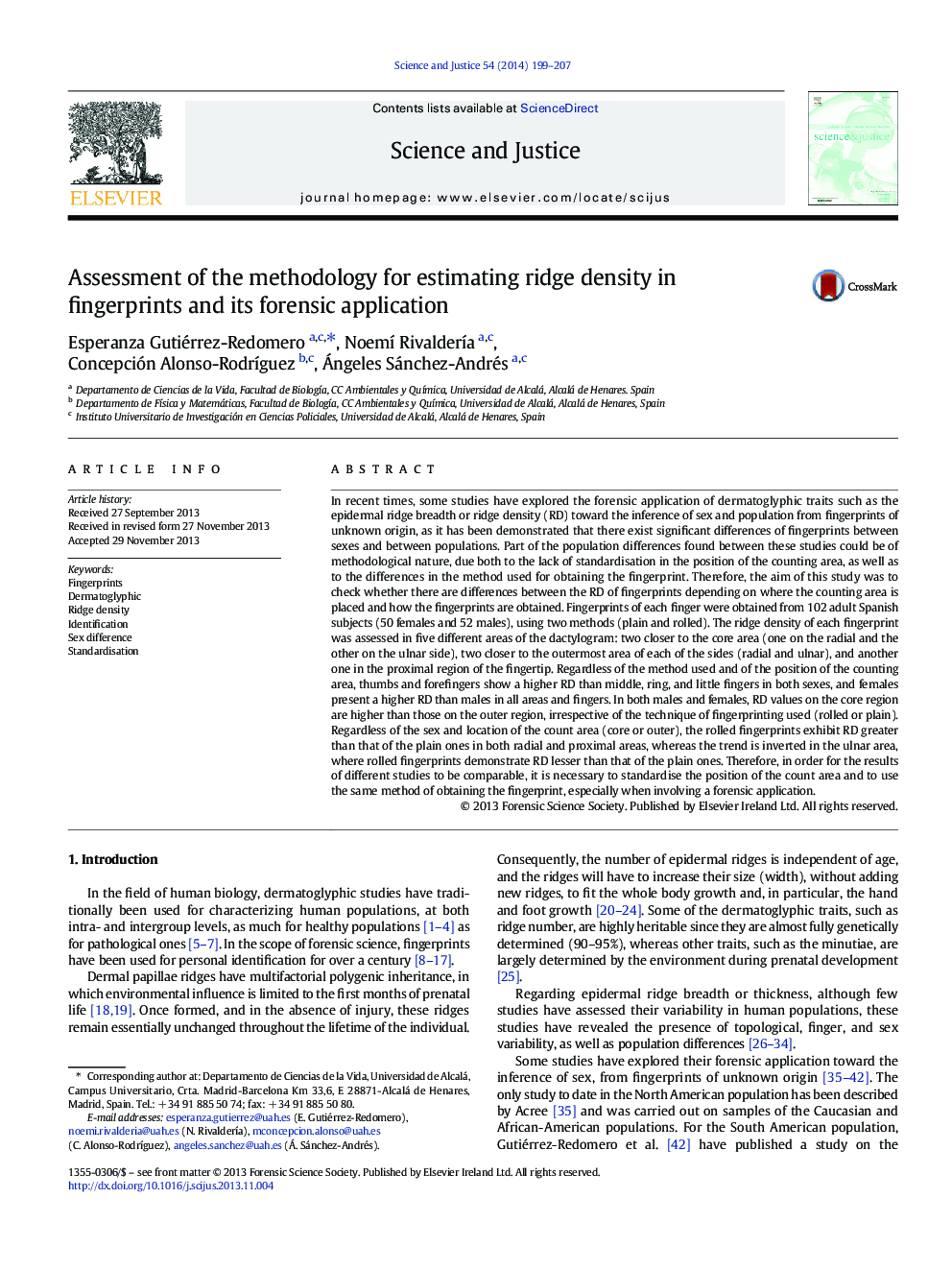| Article ID | Journal | Published Year | Pages | File Type |
|---|---|---|---|---|
| 10255507 | Science & Justice | 2014 | 9 Pages |
Abstract
In recent times, some studies have explored the forensic application of dermatoglyphic traits such as the epidermal ridge breadth or ridge density (RD) toward the inference of sex and population from fingerprints of unknown origin, as it has been demonstrated that there exist significant differences of fingerprints between sexes and between populations. Part of the population differences found between these studies could be of methodological nature, due both to the lack of standardisation in the position of the counting area, as well as to the differences in the method used for obtaining the fingerprint. Therefore, the aim of this study was to check whether there are differences between the RD of fingerprints depending on where the counting area is placed and how the fingerprints are obtained. Fingerprints of each finger were obtained from 102 adult Spanish subjects (50 females and 52 males), using two methods (plain and rolled). The ridge density of each fingerprint was assessed in five different areas of the dactylogram: two closer to the core area (one on the radial and the other on the ulnar side), two closer to the outermost area of each of the sides (radial and ulnar), and another one in the proximal region of the fingertip. Regardless of the method used and of the position of the counting area, thumbs and forefingers show a higher RD than middle, ring, and little fingers in both sexes, and females present a higher RD than males in all areas and fingers. In both males and females, RD values on the core region are higher than those on the outer region, irrespective of the technique of fingerprinting used (rolled or plain). Regardless of the sex and location of the count area (core or outer), the rolled fingerprints exhibit RD greater than that of the plain ones in both radial and proximal areas, whereas the trend is inverted in the ulnar area, where rolled fingerprints demonstrate RD lesser than that of the plain ones. Therefore, in order for the results of different studies to be comparable, it is necessary to standardise the position of the count area and to use the same method of obtaining the fingerprint, especially when involving a forensic application.
Related Topics
Physical Sciences and Engineering
Chemistry
Analytical Chemistry
Authors
Esperanza Gutiérrez-Redomero, Noemà RivalderÃa, Concepción Alonso-RodrÃguez, Ángeles Sánchez-Andrés,
